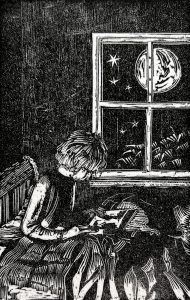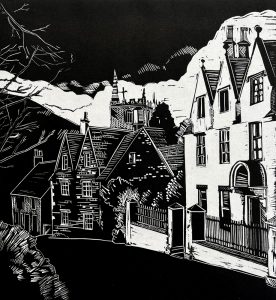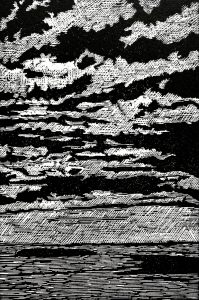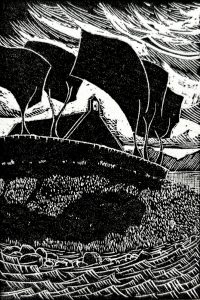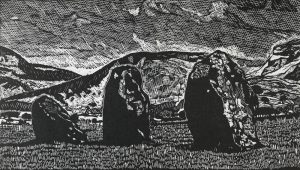Julian Brasington
PRINTMAKER PROFILE
BIOGRAPHY
An artist printmaker and poet, my work is a response to the fact that what we see, what we say, and what we feel, changes in the moment of its appearance. Its memory becomes us. Looking at things is an archaeology of sorts.
The sea is a constant in my work. I am drawn to it by its borderlessness, by its reshaping of itself, by the possibilities that it affords. Islands appeal for the opposite reason. They are holding places, retreats, and havens. My prints and my poems are themselves islands of sorts: points of capture but also points of departure.
As an artist, I work in monochrome — attracted by the possibility of grey. The restricted palette is a challenge in that tone, together with differences in form, can only be achieved through black, white, and (by illusion) grey. As a result, the accent as a maker is on the mark. The surfaces I work are flat, naked, darkened blocks that I sculpt with small marks — lines which separate dark from light, lines which cut over the lines I have previously made and which in so doing erase. The process is perverse: what is to the right on the block as I engrave appears on the left in the printed work, and only the untouched, unmarked surface takes the ink and prints. The naked remains.
I default to a small v-gouge when working lino, and to a graver and tints when engraving wood. On both surfaces I make many marks. In my poetry, by contrast, I reduce the mark to a minimum. Poems are affordances — they open up possibilities — and by paring the word and giving it room to breath, by treating nouns as verbs, by dispensing with punctuation, the affordances increase.
My poems have been appearing in literary magazines and in the national press for some thirty years. I came late to printmaking. Born in Bethesda, North Wales, I grew up in Reading, England, took fine art at school, trained as an architect at the Welsh School of Architecture, and later rarely practised art. I went into architectural history and social work; I trained as a teacher at the University of London and at Aberystwyth University, and did research in discourse analysis at Aston University. Mostly I worked with student writers. I came upon printmaking when I lost my job at the tail end of the pandemic. Cutting and pulling my first print was revelatory: I felt I had come upon something lost long ago and deep within myself. I keep digging.




